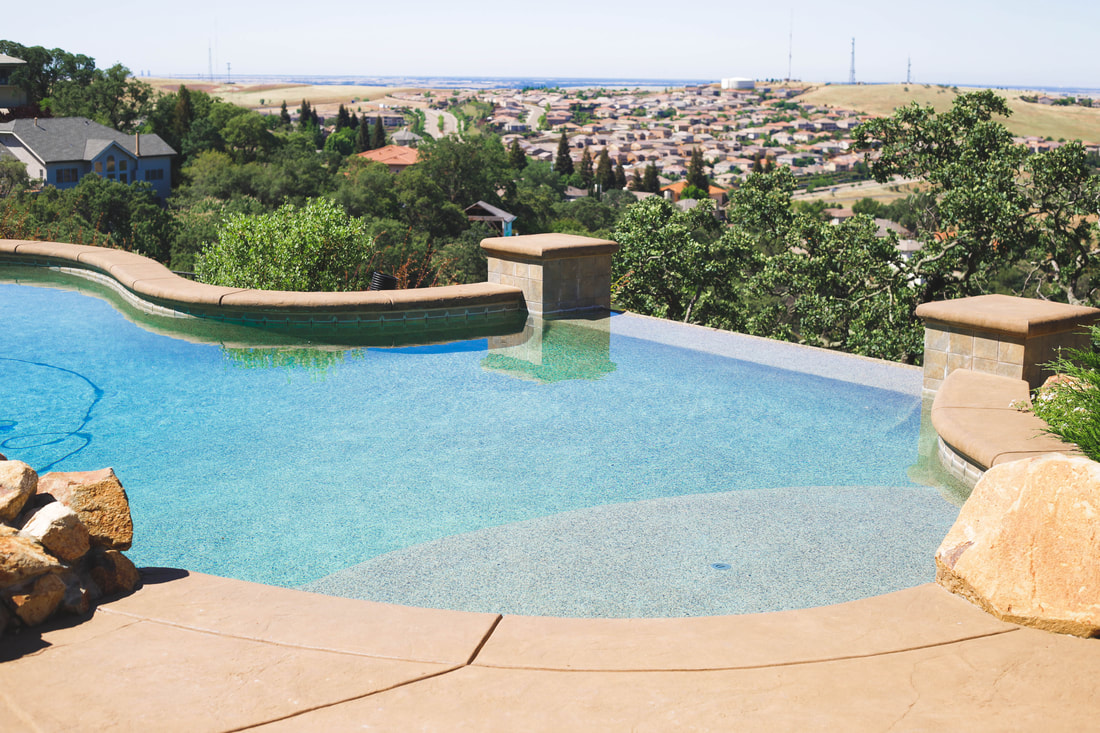 Salt water pools are becoming more and more popular nowadays, and you may be wondering if it is right for you. Here are some factors to think about when deciding whether or not to switch to a salt system. In saltwater pools, the process of electrolysis is used to sanitize the water. First, pool salt is poured into the water, and an electrolyzer is connected to the pool’s filtration system. The salt sanitizes the water as it passes through the electrolyzer, which transforms it into natural chlorine. You should weigh out the positive and negative reasons for having a salt water system versus a chlorine pool before you make a decision. PROS A salt system is much more effortless to use. The electrolyzer automates the treatment of the water, making maintenance much more seamless. Replacing the salt is much less frequent then replacement of the chlorine pebbles. Saltwater pools are more natural and have fewer health disadvantages than that of a chlorine pool. The salt will cause less allergic reactions and irritation to the eyes and skin, and there is no reason to keep excess chlorine stored in the house which is safer for the children. This also benefits the environment by not giving off chemical byproducts. The pools treated with salt are also much softer than chlorinated pools which is a more pleasurable environment to swim in. CONS Salt water systems can be more corrosive than chlorine pools. The salt naturally raises the pH levels and must be regulated manually or with a regulator. The salt levels can also prematurely damage your equipment such as the electrolzer, heaters, underwater lights, and other devices. In addition, the initial installation of the salt system is generally more expensive than a chlorinated pool. Repairing the electrolyzer can also be more expensive than other types of equipment. Even little fixes can cost a pretty penny, so be cautious when maintaining your pool’s pH environment. Whichever you choose to do, you can count on us to get the job done at an affordable price. Our certified team will get your systems working quickly and so you can start enjoying! Please contact us to get a free quote! We are the one to call for all your pool cleaning, repairs or installation in Santa Clarita.
1 Comment
Testing your water frequently is vital to sustaining adequate water ph balance and sanitizer levels to keep the swimmers comfortable and happy. pH is the amount of acid- alkalinity balance in the water of your pool. If not at the proper levels, the water will cause undesirable chemical reactions. Water which is too acidic will cause corrosion of metal equipment, cause etching on surface materials and cause skin irritation. You don’t want your loved ones to have itchy and irritated skin! If the pH of the water is too alkaline, then calcium buildup may occur and the lagoon may appear cloudy. How impressed would your guests be if your water wasn’t clear and sparkly? Our professional team will ensure that your pH levels are on point, the calcium levels are maintained and that there are no metals present. We will ensure that your swimmers will have the best experience possible.
Chlorine products are used to sanitize your pool and kill bacteria. As long as the pH levels are maintained, the chlorine will be operating at it’s optimum level. The chlorine won’t eliminate microorganisms as effectively if the water is too alkaline, and it will dissipate much quicker if the water is too acidic. If bromine is what your prefer, just ask us and we’ll take care of it! Keeping the proper balance of chemicals is a surprising amount of work, so leave it up to our team to keep your water crystal clear and balanced! What if I have a salt system? Although there is less management required for the salt water system, there are still requirements necessary to keep for a stable swimming environment. Allow us to keep up with your salt cell cleaning, replacement, and pH balancing. We will ensure that your filter, pump or skimmer is completely absent of debris to ensure your salt chlorinator will continue to chlorinate your pool. 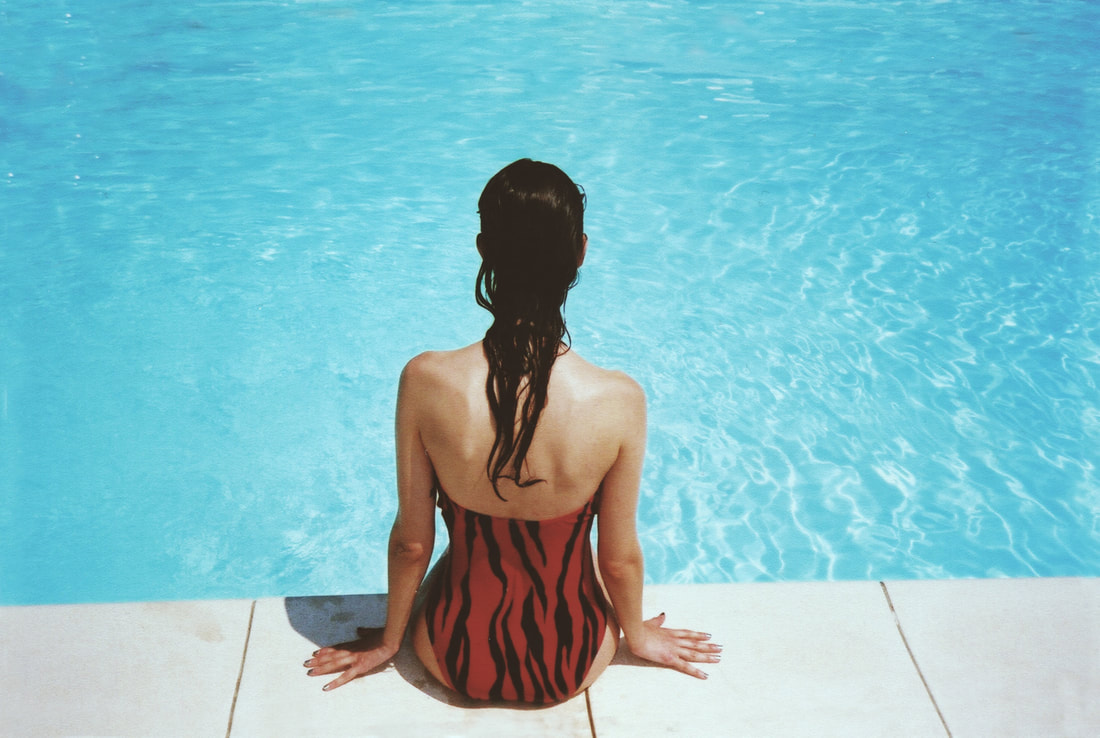 If you have your own pool, there are some steps that are required for cleaning and maintenance. Monitoring chemical, alkaline and calcium levels weekly, monthly and quarterly in addition to cleaning it can be quite the task. Maintaining your pool can be tricky especially if you don’t have the proper pool supplies. The results are beautiful, shimmery pools that are safe and enjoyable. Steps to cleaning a pool requires proper cleaning supplies and knowledge on what is used to clean a pool.
3. Cleaning the Pool. 1. You’ll want to spray the pool with diluted tile soap, this will remove the glare and clump together surface debris. Then skim the pool with your pool skimmer. It is important that all your pool maintenance tools are well kept. 2. It is important that you scrub the tiles with the appropriate tile cleaner. Some good ones to use are: Arrow scale off, Seaklear thick tile and vinyl cleaner or Bio-Dex to name a few. Most importantly you want to make sure that the tile cleaner you choose has muriatic acid. So never attempt to clean the your tiles from the inside of your pool. Try a nylon bristle brush and scrub in a circular motion. 3. Vacuum your pool. Calcium Hypochlorite is used to sanitize pool water and kill algae. Make sure that your chlorine levels are at 5 ppm after shocking your pool and before taking a dip. There you have it; pool cleaning 101. What is algae? Algae is a nonflowering plant in the same group of seaweeds and other single-celled creatures. They contain chlorophyll but lack the characteristics of other plants such as leaves, stems, roots, and vascular tissue. They grow from spores and they are constantly entering the pool. With proper circulation, filtration and sanitation, algae problems can typically be stopped before it escalates into a serious problem. But neglected and given the proper conditions, algae removal can be both time consuming and costly. Ideal conditions for growth include warm weather, unbalanced water, sunlight, and the presence of nitrates, phosphates and/or carbon dioxide. When conditions are met, an algae bloom can occur extremely rapidly, often within just a number of hours. Bad circulation, sanitation and poor filtration will only fuel the algae bloom once they have entered the water. The best treatment is taking consistent preventative measures. Algae is a living creature that lives in the water. Like any other creature, it needs food to survive. A swimming pool is a perfect pasture for algae to graze. Swimmers leave cellular remains for algae to consume, as do previous blooms of algae. Dust and debris can a be nutritious meal for these aquatic dwellers, and a heavy rainstorm or a rambunctious pool party can turn an ordinary pool into an aquatic buffet. Green algae contains chlorophyll, meaning it utilizes the suns energy through the process of photosynthesis to grow. As a result, a sunny day is a happy day for these critters, because they are able to multiply at an alarming rate. Although it is possible to grow in the shade, most forms of algae need at least a small amount of sunlight to grow. What are the different types of algae in my pool? In order to determine the treatment necessary to clean the algae in your pool, first you must be sure which type of algae you are dealing with. It is not always obvious just by looking at the color of the water. Green algae: this is the most common type of algae found commonly in pools. It is named chlorophyta, derived from chlorophyll, where it gets its green color. Green algae floats in the water, resulting in a greenish tinge and a cloudy appearance. Slimy green algae will attach itself to the floor and pool walls, making it necessary to vacuum and scrub the walls clean. This type of algae is typically a result of poor filtration and bad sanitation practices. If allowed to build up, green algae can take multiple chemicals and days of waiting to finish treatment. Proper maintenance is key for prevention of future outbreaks. Green algae is introduced to pool water from moving water. It can attach itself to rocks, toys, and swimwear and is then transferred into the pool water. This is easily a result from improper washing of bathing suits and toys after visiting the beach, lakes or streams. It can also be a result of heavy rainfall. Yellow algae – this type of algae is more rare, and is not slimy like green algae. It is common to resemble a sand like substance that lives in shadier areas of the pool. It is often referred to as mustard or brown algae because of its similarity in color. Yellow algae is chlorine resistant so pools with low levels of chlorine with see more growth of this type. Because of its resistance to chlorine, if it is not destroyed completely it will quickly return. It also thrives in warmer water temperatures. It also has a natural ability to attach itself in hard to reach places such as pool filters, equipment, and swimsuit material. Black algae- this is rarest of the 3 types of algae and the most difficult to remove. It is also known as cyanobacteria, which is not an algae at all. This type of algae will grow continuously like wildfire because it grows its own food by nature. Its roots dig deep into the walls of concrete, making it especially difficult to rid of. Unfortunately, simply shocking or adding algaecide is not sufficient enough to fight off this tough specimen. The treatment must be aggressive enough to penetrate all the way to the root, destroying it completely, or else the return of this bad boy is inevitable. Due to its stubbornness in nature, black algae must be prevented at all costs. The easiest way is to always maintain the proper pool chemistry, upkeep efficient filtration and circulation for best results. Place a Mr. Clean magic eraser in the skimmer to rid of all the green color in the pool. It erases the cloudiness in the pool with little to no effort! If you want to save money on Mr. Clean erasers, buy bulk packages of melamine foam. It is made of the same material as magic erasers but a lot cheaper. Wrap pantyhose around your skimmer basket to create a finer mesh to catch even smaller particles. Tie one end of the hose very tight and change it out when needed. If you have a sand filter in your pool, you can add some diatomaceous earth to keep things cleaner. It keeps the sand in the filter together, creating a more effective barrier against small dirt particles. Float a tennis ball in the pool. The oil that is left from the swimmers from sunblock and sun tanning lotion will eventually turn the water cloudy and attract critters. The fibers in the tennis ball will soak up all the oil from the surface and keep it from leaving a slick sheen on the surface of the water. Place dryer sheet in the basket liners around your pool. This will keep the bees and the wasps from bothering your swimmers on a hot day. Plant lemongrass, the smell of this will act as a repellant and have the same effect as citronella candles. Clean your pool tiles with baking soda. This will not only keep the tiles clean but it will help to alkalize the water. Make skimming and scrubbing your pool a routine. For an impeccable looking pool, skimming should be done everyday. Scrub the pool at least once a week, this will keep the the algae from accumulating in the hard to circulate areas of your pool. Clean out the filter basket at least once a week. Backwash at least once a month to keep the pipes clean. Set your filter on a timer to run for at least six hours a day. Turning the filter on and off too often can cause the filter’s mechanisms to crack. Check the pH Balance at least once a week. Consider the six chemicals: cyanic acid, free chlorine, acidity/alkalinity, total alkalinity, and calcium harness. Use a kit and follow instructions. If you have a chlorinator, check it regularly for proper chlorine tablet levels, loading or possible clogging. Shock your pool after large parties or events. Shocking is drastically raising the chlorine levels for a short time in order to eliminate bacteria. At least twice every season is sufficient enough to keep your pool sanitized. Keep an eye on the levels of the water. Fluctuations in the water levels will naturally occur after a night of heavy rainfall or a week of teenagers jumping in and out. This fluctuation will also cause chemical imbalances. After you’ve pumped water out or added more water to reach halfway up the opening of your skimmer, test the water to make necessary adjustments. Clean the hair and lint pot every couple of weeks. This is located on the front of the pool pump, just inside the clear glass. If you have a different style of pump, we are referring to the leaf basket or debris catcher. Pressure wash your pool deck. The surrounding areas of your pool greatly affect the perception of cleanliness of your pool. First sweep the deck and then pressure wash according to the directions until the debris is gone and the surface appears clean. Trust the pros to service your pool. Schedule a yearly service appointment from a local professional to check your equipment and diagnose any problems that may have developed. Remember that even if it seems like your pool is functioning just fine, unseen complications can snowball into costly endeavors if not treated early on. Sometimes you just need to trust the pros. Properly winterize your pool. Use a kit to make sure the water chemicals are properly balanced and then top the pool with an appropriate cover. Monitor your salt systems. Check your salt cell often to make sure it is clean and working properly. Don’t add to much salt. As a general rule: if you can taste the salt you have probably put too much. Clean filters regularly. Once a quarter should be enough to keep filters doing their job, unless you get a huge rainstorm, then clean it immediately after. Store chemicals out of direct sunlight. Keep them in a cool, dry place and be careful not to store acid and chlorine next to each other. Don’t feed the algae. Keep animals, vegetation and fertilizers away from in and around the pool. The nitrates from the waste products act as food for the algae in your pool. I hope you have found these tips helpful! Of course, if you didn't wish to do any of the work and wanted us to maintain your pool for you, that's what we're here for! We are the best pool cleaning service in Santa Clarita, CA. Please call or make an appointment today!
|
Services |
|

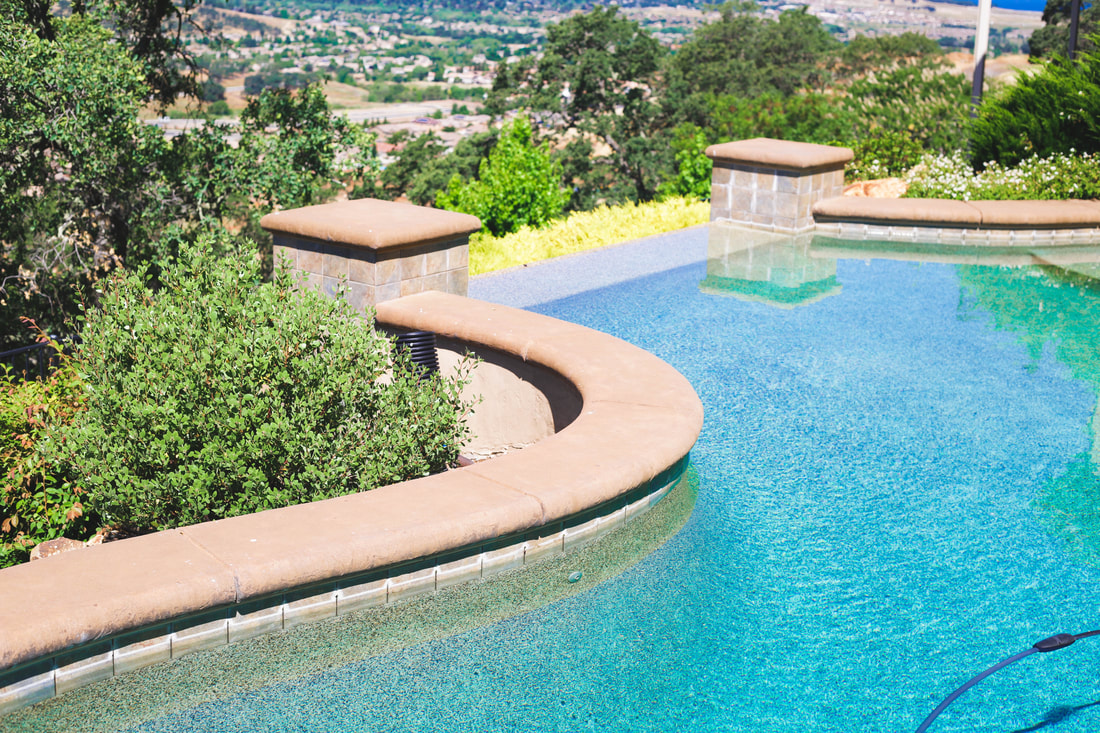
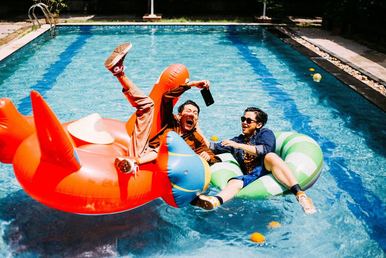
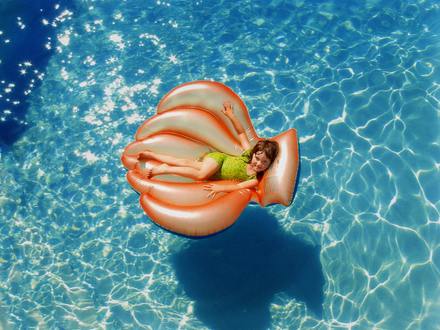
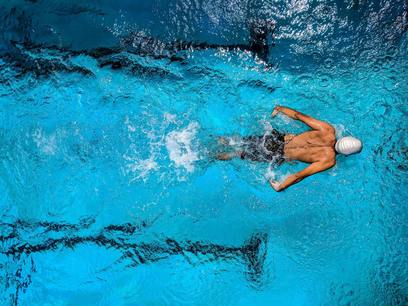
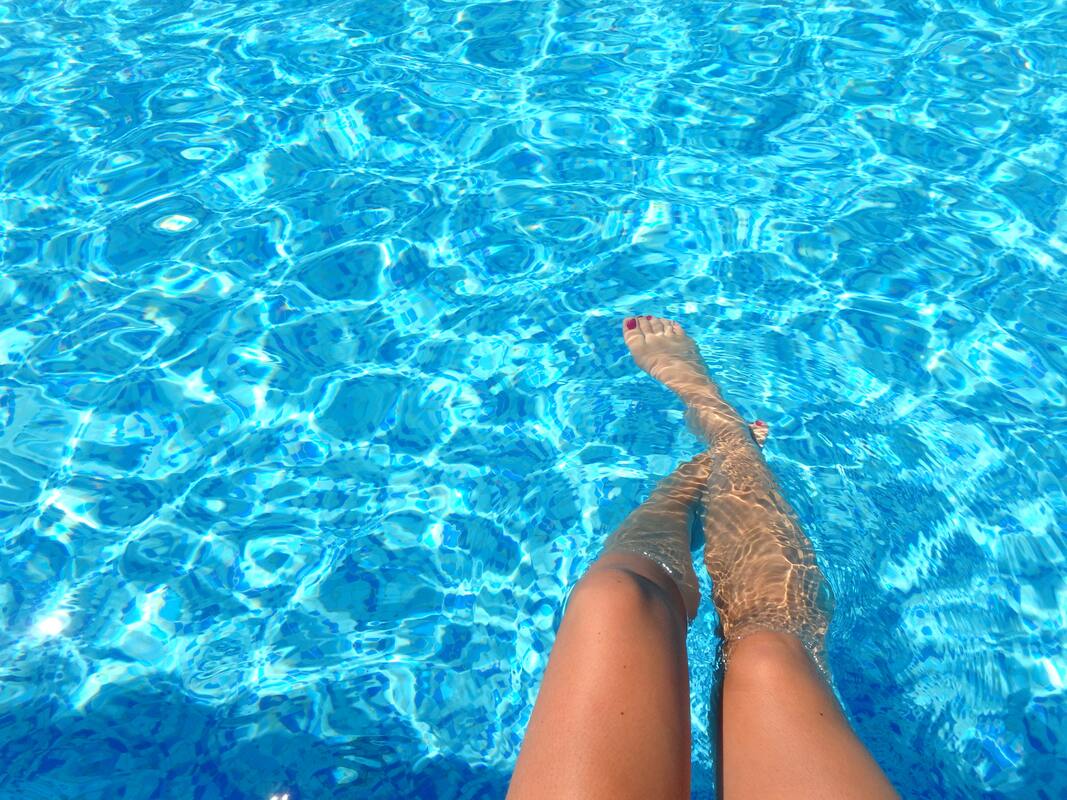
 RSS Feed
RSS Feed